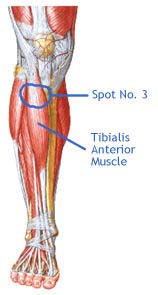Liquid Calories and Their Hidden Dangers
One of the most overlooked sources of calories during the holidays is beverages. A mere four-ounce cup of traditional eggnog contains approximately 350 calories, and adding alcohol can push this number even higher. Many people consume these drinks without considering their caloric load, contributing significantly to weight gain over the festive season. Experts suggest diluting eggnog with skim milk or opting for lighter versions to mitigate excessive calorie intake. This small change can help maintain energy balance while still enjoying the seasonal treat.
The Problem with Mindless Snacking
The holiday season is synonymous with endless snack trays filled with nuts, chips, and dips. While convenient, these snacks can be calorie-dense and lack essential nutrients. Just three handfuls of mixed nuts can contain over 600 calories, making portion control essential. Healthier alternatives include fresh vegetables, plain whole-grain crackers, or pretzels. Researchers emphasize that mindful snacking not only reduces excess calorie consumption but also improves digestion and satiety, preventing binge eating during large holiday meals.
The Impact of Alcohol on Eating Behavior
Alcoholic beverages are a staple at holiday gatherings, but they can significantly influence hunger levels and decision-making regarding food intake. Studies show that consuming alcohol before meals can lead to increased calorie consumption, as it lowers inhibitions and enhances appetite. A strategic approach is to enjoy alcohol in moderation and consume it with meals rather than before, preventing overindulgence. Non-alcoholic alternatives such as sparkling water with lime can serve as festive substitutes while maintaining hydration.
Turkey: The Centerpiece of the Holiday Table
Americans consume over 22 million pounds of turkey during the holiday season, making it a crucial part of traditional meals. Choosing white meat over dark meat reduces calorie intake by nearly 20%, and removing the skin eliminates an additional 20%. Proper preparation methods, such as roasting instead of deep-frying, can further enhance its health benefits. Nutritionists recommend pairing turkey with fiber-rich side dishes to balance the meal and promote digestive health, making holiday feasts both delicious and nutritious.
The Potato Conundrum: Mashed or Baked?
Potatoes are a holiday staple, but their nutritional value varies based on preparation. A half-cup of mashed potatoes with gravy and butter can exceed 300 calories, while a baked half-sweet potato with a teaspoon of butter contains significantly fewer calories and more fiber. Choosing nutrient-dense options such as roasted sweet potatoes can improve satiety and reduce blood sugar spikes, making them a superior alternative for maintaining steady energy levels throughout holiday festivities.
Cranberries: The Superfood of the Season
Often labeled as a "superfruit," cranberries offer a range of health benefits due to their high antioxidant content and minimal fat. Whole or chopped cranberries retain their nutrients better than traditional cranberry sauce, which can contain up to 80% more sugar and calories. Research highlights that cranberries support urinary tract health, reduce inflammation, and improve cardiovascular function. Incorporating them into meals in their natural form can maximize their benefits while keeping calorie intake in check.
The Dilemma of Holiday Stuffing
Stuffing is a beloved holiday dish, but its caloric density depends on its ingredients. Traditional recipes containing sausage and bacon can be replaced with whole-grain bread, fresh fruit, and vegetables to enhance fiber content and reduce unhealthy fats. Studies show that fiber-rich stuffing options aid digestion and prevent rapid blood sugar fluctuations. Making simple modifications to stuffing recipes can provide a healthier alternative without compromising taste, making holiday meals both satisfying and nutritious.
Green Bean Casserole: A Hidden Caloric Bomb
Green bean casserole is a common holiday side dish, often prepared with cream-based soup and fried onions. A typical half-cup serving contains approximately 275 calories and 10 grams of fat. Omitting fried onions can cut calorie content in half and reduce fat intake by 75%. Nutritionists suggest using fresh green beans and substituting cream-based soups with lighter broth-based alternatives, enhancing the dish’s nutritional profile while preserving its traditional flavor.
Pumpkin Pie: A Healthier Dessert Option
Compared to cherry, apple, or pecan pie, pumpkin pie offers fewer calories and less fat, making it a relatively healthier dessert choice. When topped with nonfat whipped cream, the calorie content remains controlled, allowing indulgence without excessive energy intake. The beta-carotene content in pumpkin contributes to eye health and immune support, reinforcing its status as a nutrient-rich holiday treat. Moderation remains key in ensuring that dessert consumption does not offset the benefits of healthier main courses.
Regardless of how well-balanced holiday meals may be, portion control ultimately determines their impact on health. Excess calorie consumption often results in weight gain, making mindful eating an essential strategy. Simple habits, such as eating slowly and recognizing satiety signals, can prevent overindulgence. The best exercise after a heavy meal might just be placing both hands on the table, pushing away the plate, and going for a post-meal walk to aid digestion and maintain an active lifestyle.
References available upon request.













